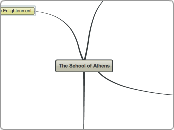by suzann svatek 13 years ago
698
The School of Athens
The artwork known as "The School of Athens" is set within a building modeled after the shape of a Greek cross, potentially foreshadowing the architecture of St. Peter's Basilica, with assistance from Bramante.









